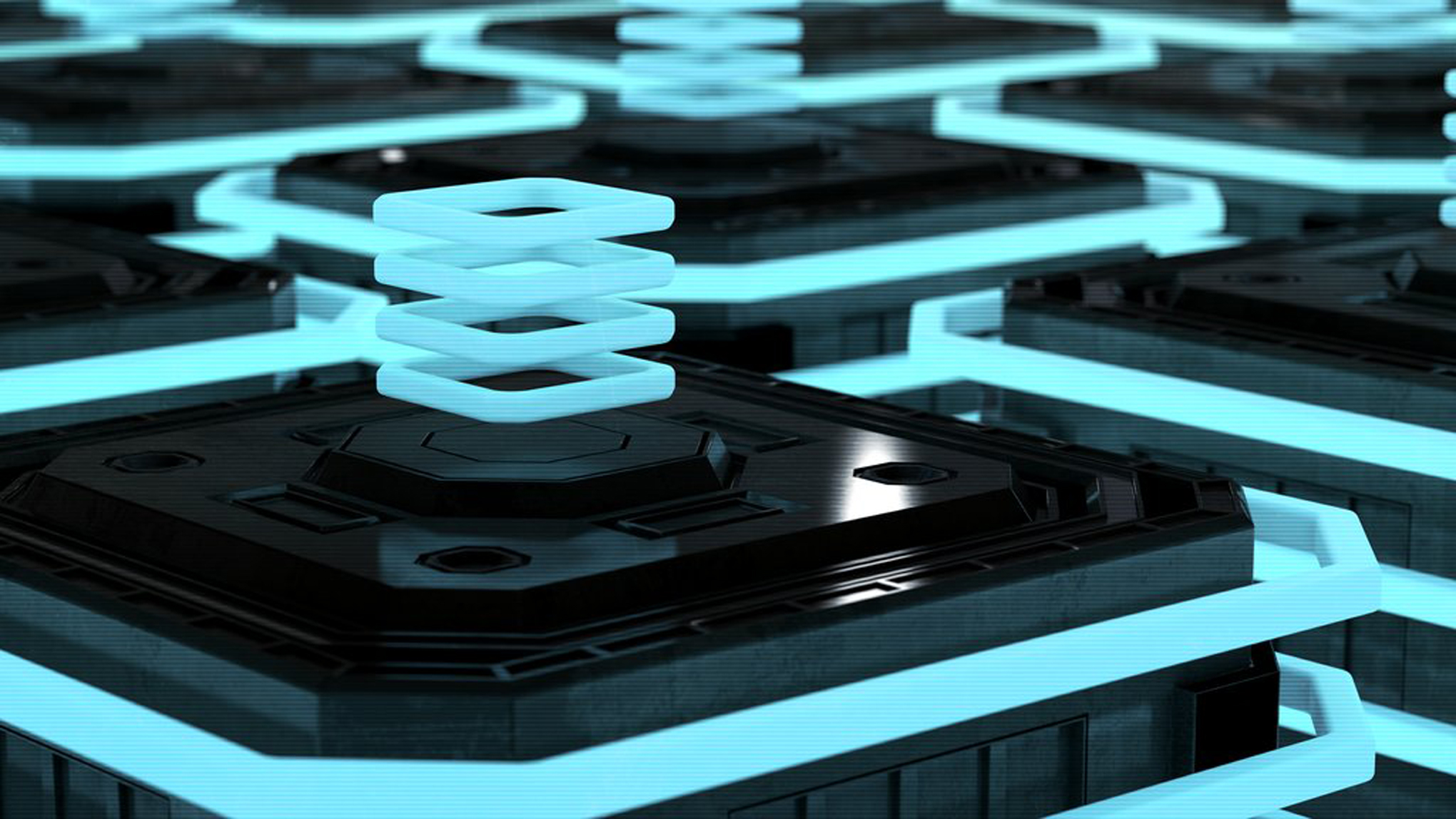Amazon Dash is starting a wave in technology that is tearing apart your phone and making the way we interact with devices easier than ever before. Not to mention, they’re influencing your future of shopping online.
They call them Amazon Dash Buttons which are tiny, physical gadgets that allow for one-click reordering of your favorite products with one tap of a finger. For instance, you can stick a Tide Dash Button on your washing machine, so when you pour the last cup of laundry detergent you can refill it with a click.
Finally, some technology even my grandma can get excited for!
Aside from Tide (rhyme unintentional), these physical Dash Buttons are so popular that over 250 brands have signed up. Anything from lotion to Pop-Tarts is easily ordered with the click of a button. Honestly, I’m waiting for Oscar Meyer Bacon to get a button, then I’ll be sold.
Yes, a silly button that makes impulse buying even easier may not seem like much in the way of technological advancements, but trust me this is huge!
Amazon is creating a future of shopping online where computers know exactly what we want. No need to touch a screen. They no longer want you to load up their app, search their marketplace, compare prices, and verify your payment method just to get a box of razors. They want shopping to be seamless.
And by creating experiences that aren’t tied to an app or website, they make the process of online shopping easier. In turn, this gets customers further tied into the Amazon ecosystem.
Think about it.
How often have you walked into a grocery store with three things on your list? Then, ended up with a cart full of food, staring at the towering wall of snacks. Well, this is supposed to happen. Grocery stores purposely put their most common items (milk, eggs, orange juice) in the most inconvenient locations.
With Dash Buttons, Amazon brings a better user experience to an ancient industry – automating the time we spend shopping. In a sense, they are making their own smartphone app obsolete with these physical buttons.
Not to mention, Amazon isn’t the only company envisioning a future where experiences outside of apps or websites are the way to win.
Snapchat has created the Spectacles, which are glasses that can take Snapchats, making the Snapchat experience as easy as putting on some glasses. Apple has created the AirPods, which remove the hassle of plugging in your headphones; they are always on and ready to play.
The next wave of human interaction with technology is one in which our devices are waiting for us, automating our days, and getting rid of unnecessary, time-consuming processes.
Amazon Dash is even competing with themselves…
The funny thing is that the Amazon Dash has a rival within the company, the Amazon Echo — their Artificial Intelligence powered speaker. Amazon Echo is betting that the future of shopping online will involve talking into a speaker to order things.
So, Amazon has effectively given you two options. One uses artificial intelligence to process voice commands, while the other is a button you press.
What type of future do you want?
Do you like the science-fiction track we are on where we interact with computers as if they were our equal? Or would you prefer the simplistic future where the computer is an omnipresent button? (Your answer probably says a lot about your thoughts on technology.)
Either way, these technologies get rid of wasted time, giving you more time to do what you love. I, for one, will spend this extra time writing additional Quick Theories.
If you enjoyed this article and want to receive weekly Quick Theories articles, you can sign-up here: quicktheories.com



I was super interested with the dash buttons when they first came out, or at least when Amazon.com first started replacing their standard banner with an admittedly well-crafted mosiac made of various dash buttons. The banner did its job – it piqued my interest. But the problem I see down the road, especially when it comes to the button’s in-home competitors (AIs and other home automators, to be specific) is exactly the same thing that makes them useful: they’re (the buttons) specific…VERY specific. Think about it; Tide doesn’t just have one product. They have all kinds of different Tide products, tailored to what kind of, well, tailoring you’re used to/prefer. Worse yet, if you can only order a very specific set of things and this becomes your way of re-populating your to-buy lists (grocery, etc), then you’ll end up locking yourself into a cycle you never meant to create – you’ll be in a routine. The button is “dumb” on purpose, and this has its appeal, especially to users who are flabbergasted by busy websites and who straight up don’t even USE mobile apps. But this same appeal is exactly what limits it, and anyone who comes to rely on it alone, to a routine that inevitably spirals further and further into monotony.
As far as I see them, they have their place in the IoT (Internet of Things). Yes, for those products that we’ve tried the different varieties of and come to a conclusion that we like, the dash button is almost a revolution. But what if we want to buy a different brand, or what if we’re reorganizing our life during a major transition – say from high school to college, or from college to real life, from singledom to marriage. This will require routines that change, and our buttons will end up creating an entirely new mosaic in our nearby landfill.
Worse yet, they might prevent users from finding better alternatives to products they use – one of my favorite features on Amazon’s website, for instance, is the “User’s who viewed this page also viewed….” section, where I can find links in a chain that lead me to a whole new variety of things I wasn’t even aware of beforehand. The dash button offers no such linkage, and might end up creating a kind of barrier-to-entry in a whole slew of markets.
In short, they’re cool, but the very thing that makes them unique also makes them both routine-enforcing and potentially dangerous to innovation and creativity.
I second what Drew has said about buttons being “dumb” and associated limitations. But what is degenerative for us power-users is a golden egg goose for retailers. The natural solution as far as I’m concerned is re-programmable buttons.
I was generating the same thoughts as Drew as I read through the article. Is this not the worst thing we can think of for consumer competition? It literally puts the saying “out of sight, out of mind” in perfect context, as you will never see the fresh new brand who may have a better pricepoint. But that’s exactly what the big brands want. It really feeds into the movement of letting other people (or computers) think for you, and not making your own grown-up decisions. Plus….who wants 100 different buttons stuck around their house?
Anyway, it’ll be fun to hear the first story of when someones 6 year old ordered 82 boxes of fruit roll-ups.
My wife and I shop for best prices with brand only a secondary decision point. I don’t see the button approach as practical for this mode of operation. Secondarily what happens when a curious child or grandchild (depending on where you are in life) decides to push the button, perhaps multiple times?
So does Staples get a cut of the profits from Amazon using their idea?
No, not a real question. It is still interesting . . . One company’s marketing gimmick + some time and tech advances (increasing wifi coverage) and POOF another companies actual product is born.
Well, it is just not for all products, but for favorite ones and for cheap, like a toilet paper or diapers (I awlays buy one brand). It is esaier just to press a button.
I also don’t think this is good news for the consumer. As Kyle suggested, first of, because of the focus effect, we would totally ignore other retailers. I don’t think letting our impulsiveness free and even thanking Amazon for it is wise or well thought. How would you thank amazon for letting you seamless grow your stack of high fructose chocolate doughnuts to keep up the weight gain? Availability is really important if you want a healthy diet: don’t live around delicious threats, instead live around healthy ones. Otherwise your automatic primitive and non rational thought processes will always rather have the doughnuts… With the click of a button. Brainless or irrational consumism is what you can expect by letting those primitive processes free… Aside from all those accidents.
One thing I think about though: if I pressed a Dash button, I’d want to go to my account to make sure the press went through and the order is placed. If I’m doing that I might as well have just ordered from the website. I think I’d prefer the Alexa approach. I ask a computer to re-order the dog food, and I get a verbal response back: “ok, I’ll order that for you; it should arrive on Thursday.”
I agree with Greg: Alexa will eventually supplant Dash buttons. I just don’t see a consumer having dozens of buttons around the house to order items; it’s just not practical.